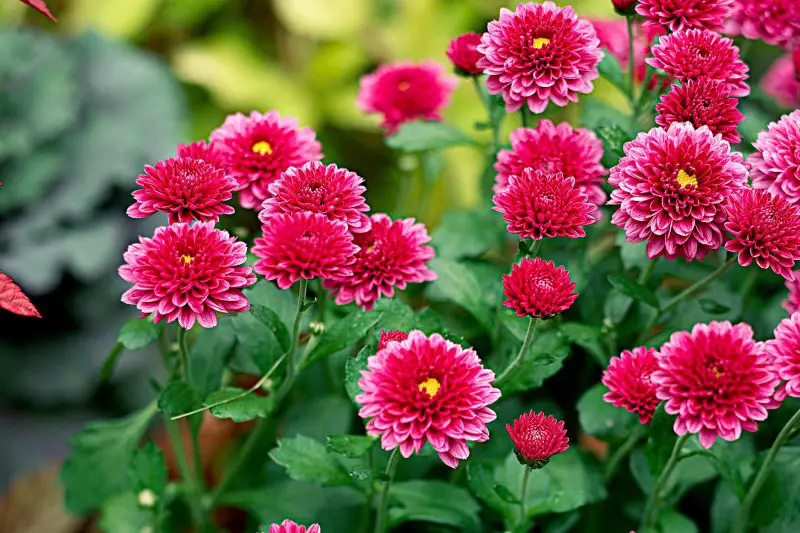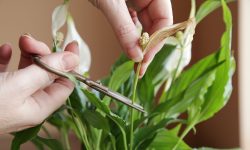Mums, also known as chrysanthemums, are iconic fall flowers that burst into bloom just when most other plants begin to fade. With their vibrant colors and wide variety of forms, mums are a favorite in both gardens and containers during autumn. However, many gardeners find themselves wondering how long these stunning flowers actually last—and more importantly, how to make them bloom longer.
Understanding the factors that influence a mum’s longevity, from planting techniques to post-bloom care, is essential for maximizing their visual impact. Whether you’re working with garden mums or florist mums, there are proven methods to extend their blooming period and keep them vibrant throughout the season.
The Typical Lifespan of Mums

Mums typically bloom for four to eight weeks, but their lifespan varies depending on the type, planting time, climate, and care. Florist mums, often sold in stores for seasonal decoration, usually last two to four weeks. These are not bred for outdoor hardiness and rarely survive frost or rebloom once their initial display fades.
Garden mums, or hardy mums, have a longer life. When planted in spring or early summer, they can establish strong roots and return yearly in zones 5 to 9. These varieties bloom for six to eight weeks and can survive winter with proper mulching and minimal pruning.
Potted mums have a more limited lifespan—around four to six weeks—since their root systems are confined. Without regular watering and deadheading, their blooms may fade sooner, especially in hot or cold conditions.
By choosing the right type of mum and planting at the optimal time, you can enjoy vibrant blooms well into the fall—and even year after year with hardy varieties.
Factors That Shorten or Extend Bloom Time
Environmental Conditions
Temperature plays a major role in how long mums will stay in bloom. Cool nights and moderate daytime temperatures (between 60°F and 70°F) help flowers last longer. Excessive heat can accelerate blooming and cause petals to fade more quickly, while frost can damage flowers or kill the plant altogether if it’s not well established.
Humidity and rainfall also influence bloom duration. High humidity or heavy rain can lead to fungal issues or petal spotting, both of which detract from appearance and reduce flower longevity. Proper spacing and air circulation help minimize these problems.
Watering Practices
Consistent watering is essential for mums, particularly those in containers where soil dries out faster. Dry conditions stress the plant and may cause buds to drop prematurely or flowers to fade more rapidly. However, overwatering can be just as damaging, promoting root rot and other diseases. Finding a balance—keeping the soil moist but never soggy—is key to keeping mums blooming longer.
Light Exposure
Mums are photoperiodic plants, meaning their blooming cycle is influenced by day length. They require at least six hours of sunlight daily to produce and maintain their flowers. In low-light conditions, buds may fail to open, and flowering will diminish quickly. When placed in full sun, especially in the morning, mums perform best and retain their blooms much longer.
Choosing the Right Type of Mum
Selecting the appropriate type of mum is the foundation for enjoying long-lasting blooms and potentially perennial beauty. There are two main categories of chrysanthemums: florist mums and garden mums, and understanding their differences is key to maximizing their lifespan and performance in your garden or containers.
Florist Mums: Short-Lived Decorative Charm
Florist mums, also known as cutting mums, are bred primarily for aesthetic appeal rather than resilience. These are the types often found in grocery stores, florists, and fall-themed displays. While their colors are vibrant and their flower shapes vary from daisy to spoon and quill forms, they are typically forced to bloom early under controlled greenhouse conditions.
These mums are usually grown as annuals and not intended to survive outdoors. Their roots are shallow, and they lack the hardiness to withstand temperature fluctuations or frost. Even with perfect care, florist mums usually last two to three weeks and are unlikely to rebloom. If planted outdoors, they will rarely establish strong root systems, especially if planted in late summer or fall.
Garden Mums: Resilient and Repeat Bloomers
Garden mums, also called hardy mums or perennial mums, are cultivated for both beauty and durability. These plants are bred to tolerate cooler temperatures and can survive winters in USDA zones 5 through 9 if planted at the right time—ideally in the spring or early summer.
Unlike florist mums, garden mums develop deep root systems that allow them to overwinter successfully when given proper mulch protection. Their bloom cycles typically last six to eight weeks, and with deadheading and adequate care, they can offer color well into the late fall. Common garden mum cultivars include ‘Sheffield Pink’, ‘Clara Curtis’, and ‘Mammoth Daisy’, all of which are popular for their reliable fall color and strong growth habits.
Specialty and Hybrid Varieties
In addition to the two main types, there are hybrid varieties specifically bred for compact growth, prolific flowering, or unique petal structures. Some hybrids combine the lush fullness of florist mums with the resilience of garden mums. These are ideal for container gardeners who want both impact and longevity.
When purchasing mums, always check the plant tag or label. If it lists a USDA hardiness zone, it’s most likely a garden mum. If the tag says “not winter hardy” or lacks zone information, it’s probably a florist mum meant for temporary display.
By choosing the right type of mum and aligning it with your climate and growing goals, you can set the stage for either a stunning short-term autumnal display or a recurring fall highlight in your garden year after year.
Tips to Make Mums Last Longer
Pinching and Pruning for Fuller Blooms
If planting mums in spring or early summer, regular pinching encourages bushier growth and more flower buds. By pinching back the growing tips every two to three weeks until mid-July, you stimulate branching and delay bud formation until fall, which results in a fuller, more prolonged bloom.
Avoid pruning after late summer, as this can disrupt the plant’s natural flowering cycle. For potted mums purchased in full bloom, deadheading spent flowers is the best way to promote continued blooming and prevent energy from being wasted on seed production.
Feeding for Continued Flowering
Mums are heavy feeders and benefit from regular fertilization during their growing phase. A balanced fertilizer high in phosphorus and potassium promotes bud formation and flower development. For mums in the ground, monthly feeding from spring through early fall supports robust blooming. In containers, more frequent feeding—every 10 to 14 days—is often necessary due to nutrient leaching from watering.
Avoid high-nitrogen fertilizers in late summer, as these encourage leafy growth at the expense of flowers. As mums approach their blooming season, switching to a bloom booster formula ensures more vibrant, longer-lasting flowers.
Strategic Placement and Protection
To extend the life of your mums outdoors, place them where they’re sheltered from strong winds and heavy rains. Positioning them against a south-facing wall or under a porch overhang provides protection while maintaining access to sunlight.
During early frosts, cover garden mums with a breathable fabric such as frost cloth overnight to preserve the blooms. For potted mums, bringing them inside temporarily or placing them in a protected location extends their bloom time and prevents cold damage.
How to Revive Fading Mums
Understanding Why Mums Fade
Fading mums can result from various stress factors including improper watering, nutrient deficiencies, poor light exposure, root congestion in containers, or fungal diseases. Accurately identifying the cause is crucial before attempting revival. Wilting blooms or yellowing leaves often signal problems in the root zone or nutrient imbalances, while brown or mushy roots typically indicate overwatering or rot.
Stimulating Recovery Through Pruning
Reviving mums begins with cutting back all spent blooms and yellowed foliage. Prune each faded flower head down to the next set of healthy leaves using disinfected shears. For mums that have grown leggy, a moderate cutback—removing about one-third of the plant’s height—can help redirect energy toward new shoots. Precision cuts just above leaf nodes help stimulate fuller branching while reducing infection risk.
Refreshing the Root Zone
In potted mums, roots often become densely packed, reducing water and nutrient uptake. Gently remove the plant from its container, tease apart the roots, and replant it in fresh potting mix enriched with compost and perlite. Garden mums benefit from soil aeration and a fresh layer of compost to boost microbial life and drainage. Applying a low-nitrogen, balanced fertilizer at half strength can support regrowth without overloading the foliage.
Adjusting Light and Watering Conditions
Mums thrive with at least six hours of direct sunlight daily. If light is limited, relocate containers or thin nearby vegetation to improve access. Water the plant deeply but allow the top inch of soil to dry out between waterings. Avoid letting water sit on leaves or at the base for extended periods, as this encourages fungal issues. A moisture meter can help you monitor soil conditions more accurately during recovery.
Applying Micronutrients and Foliar Support
If regrowth is slow, foliar feeding can deliver micronutrients directly through the leaves. A diluted seaweed extract or fish emulsion spray applied in the early morning can quickly support bud development and green tissue. Mums also respond well to magnesium and calcium supplements. Dissolving Epsom salt in water and applying it every two weeks during the recovery phase helps correct deficiencies and improve tissue strength.
Preventing Further Stress and Infection
As mums recover, maintaining airflow around the plant is essential to prevent fungal outbreaks. Thin overly dense stems and ensure spacing between plants to improve circulation. Use bottom watering techniques to avoid wetting the foliage and consider using biofungicides if signs of mildew or blight appear. Monitor the plant daily and remove any newly damaged or infected areas promptly.
Supporting Long-Term Regrowth
Full recovery can take one to two weeks, with the appearance of new buds and compact growth being the first positive signs. In some cases, faded mums will not bloom again during the same season, but with care, they can remain healthy and build reserves for next year. Even if immediate flowering isn’t possible, strengthening the plant ensures it will return more vigorously in the next growth cycle.
Overwintering Garden Mums for Next Year
For gardeners who want to enjoy their mums beyond one season, overwintering is possible with proper preparation. In-ground mums that have been planted early in the year and have well-established roots stand the best chance of surviving winter.
After blooming finishes in the fall, do not cut the plant back. Instead, allow the stems to remain standing and mulch heavily around the base with straw or shredded leaves. This protects the crown from repeated freeze-thaw cycles. In spring, prune away the dead stems once new growth emerges.
Potted mums can be overwintered indoors in an unheated garage or basement. Keep the soil barely moist and the temperature cool. Come spring, gradually reintroduce them to light and warmth to encourage regrowth.
Frequently Asked Questions About How Long Mums Last
How long do mums last after blooming begins?
The blooming period of mums typically ranges from 3 to 8 weeks, depending on the variety, growing conditions, and care practices. Garden mums planted in well-drained soil with full sun exposure tend to last longer than florist mums kept in containers indoors. The key factors influencing bloom duration include temperature, light, watering frequency, and deadheading. Cooler temperatures around 50–60°F can prolong flowering by slowing down bud maturity. With proper maintenance, especially consistent deadheading and regular fertilization, you can extend the blooms through the end of fall in many regions.
Are mums perennials or annuals?
Mums are technically perennials, particularly the hardy garden mums (Chrysanthemum × morifolium), which can return year after year if planted correctly and overwintered successfully. However, many people treat them as annuals, especially when purchased from nurseries in full bloom during the fall season. For mums to survive through winter and come back in the spring, they need to be planted in the ground early enough—usually by mid-September—so they can establish roots before the first frost. Protecting them with mulch and cutting back the dead stems after a hard freeze can significantly improve their chances of returning next season.
What’s the difference between garden mums and florist mums?
Garden mums, also known as hardy mums, are bred to survive outdoors and tolerate colder temperatures. Their root systems are more robust, and they bloom reliably in USDA zones 5 through 9 if given adequate time to establish. They tend to have a more compact shape and smaller but more numerous blooms.
Florist mums, on the other hand, are bred primarily for decorative indoor use and feature larger, often more elaborate flower heads. These varieties are not cold-hardy and are unlikely to survive a frost, as they are typically grown in greenhouses and not intended for planting in gardens. While stunning, florist mums are best enjoyed indoors or outdoors temporarily in pots.
Can mums survive winter outdoors?
Hardy mums can survive winter if they are well established before the ground freezes. This means planting them at least six weeks before your region’s first expected frost date. Once the blooms die back in late fall, cut the plant down to about 3–4 inches above the ground and apply a thick mulch layer, such as straw or shredded leaves, to protect the roots from freezing. In colder zones (below USDA Zone 5), additional protection or overwintering indoors may be necessary to ensure survival.
Florist mums, however, do not overwinter successfully outside, even with protection, as they lack the cold tolerance and dormancy needed to return in spring.
How do I get mums to bloom again next year?
To encourage mums to bloom again the following year, follow a few essential steps:
Plant early in well-draining soil with full sun exposure.
Pinch back new growth starting in late spring through early July to shape the plant and promote more flower buds. Stop pinching by mid-July to allow buds to develop.
Fertilize regularly with a balanced, slow-release fertilizer to support both vegetative and reproductive growth.
Mulch in fall and provide winter protection if you live in colder zones.
Avoid wet soil during dormancy, as excessive moisture can cause root rot and kill the plant before spring.
With these practices, hardy mums can become reliable fall bloomers year after year.
What’s the best time of year to plant mums for maximum lifespan?
The best time to plant hardy mums is late spring to early summer, ideally by early July. Planting during this window allows the root system to become fully established before fall blooming and before the winter dormancy period begins. Summer planting also provides an opportunity to shape the plant with timely pinching, resulting in fuller, more compact growth and a higher bud count in autumn.
Planting in the fall, while popular for instant color, often doesn’t give the roots enough time to acclimate to the soil and weather changes, which reduces their chance of surviving the winter.
How can I tell if my mums are dead or just dormant?
After a frost or over the winter, mums can appear dead due to the dried and browned foliage. To determine whether they are dormant or dead:
Check the base of the plant at the crown. Use your fingernail to gently scrape the surface of the lower stems. If you see green tissue underneath, the plant is still alive.
Look for new growth emerging in early spring from the base.
Inspect the roots by gently digging around the crown. Firm, white roots indicate life, while mushy or black roots are signs of rot.
Dormant mums will remain lifeless on the surface but will re-emerge when soil temperatures warm up again in spring, often by April or May depending on your zone.
Conclusion
Mums may be known for their seasonal beauty, but with the right care, their vibrant display can last far longer than most gardeners expect. Understanding how long mums typically bloom—whether you’re growing hardy garden varieties or showy potted ones—gives you the foundation to support their longevity. From choosing the right cultivar to refining your watering schedule, enriching the soil, and pruning with precision, each step plays a role in extending the blooming period. Even fading mums can be brought back with timely intervention and a little horticultural insight. With thoughtful attention and consistent maintenance, mums can reward you with full, colorful blooms that brighten your garden or porch well into the late fall, season after season.






